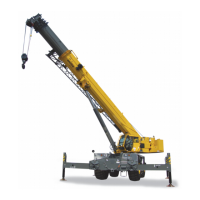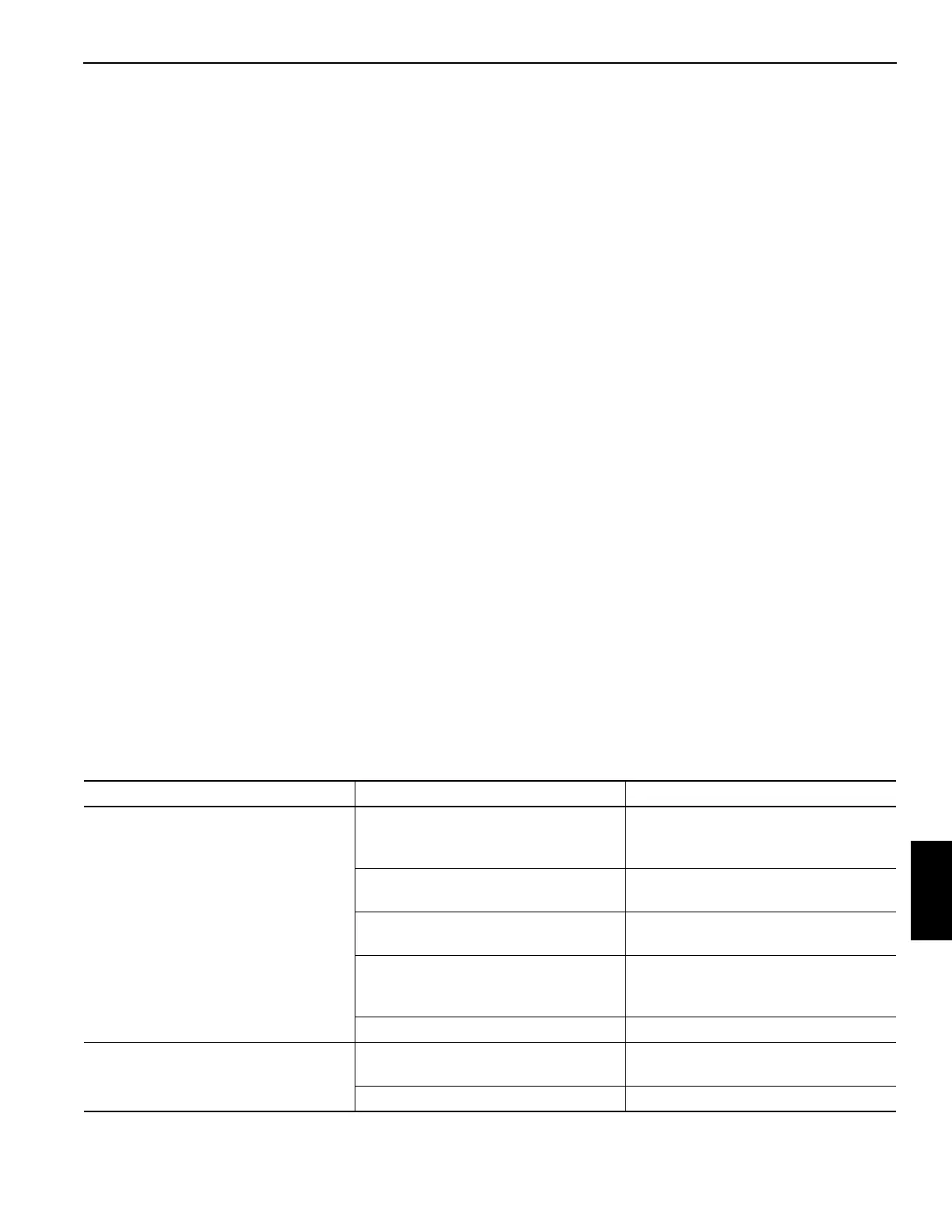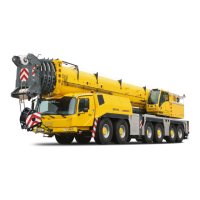Grove Published 11-22-2016, Control # 345-12 8-5
RT9130E-2 SERVICE MANUAL UNDERCARRIAGE
STEERING SYSTEMS
Description
To maximize maneuverability, the crane can be steered by
the front axle, the rear axle, or by the front and rear axles
simultaneously. The crane utilizes two separate steering
systems, one to control front axle steering and one for rear
axle steering.
Front Steering System
The front steering system consists of a hydraulic pump, load
sense steer priority flow divider valve (part of the swing
directional control valve), load sense steering control valve,
and two steer cylinders. The hydraulic pump is driven by the
engine and supplies a hydraulic flow of 33.0 gpm (125 l/min)
to the load sense steering priority flow divider. The load
sense steer priority flow divider valve provides 0 to 18.5 gpm
(0 to 70 l/min) to the front steering control valve and 14.5 to
33.0 gpm (55 to 125 l/min) to the swing system. When the
steering wheel is turned, the load sense steering control
valve sends a load sense signal to the load sense steer
priority flow divider. As the load sense pressure increases,
the priority flow divider spool shifts to direct oil from the
hydraulic pump to the steering control valve, and to direct oil
from the L port and R port of the steering control valve to the
steer cylinders.
Rear Steering System
The rear steering system is controlled through a section of
the integrated outrigger/rear steer valve and consists of the
control valve and two steer cylinders. A rear steer indicator
system is provided to indicate when the rear wheels are not
centered. This system consists of an indicator light located
on the front console in the cab and a switch located on the
right side of the rear axle. When the rear wheels are turned
to the left or right, the amber indicator light will illuminate.
Theory of Operation
Front Steering System
Hydraulic oil flow from Pump No. 1 flows through port 5 of the
hydraulic swivel to the steer/swing directional control valve.
Regulated flow from the steer priority flow divider valve is
routed to the front steering control valve upon turning of the
steering wheel and pressurizing of the load sense line. The
front steering control valve routes the oil to the appropriate
ends of the front steer cylinders to turn the wheels in the
desired direction.
Rear Steering System
Hydraulic flow from the second section of pump number 3 is
directed to the integrated outrigger/rear steer valve. When
the Rear Steer Control Switch in the cab is positioned to left
(L) or right (R), a signal is sent to the rear steer solenoid,
shifting the control valve spool, routing the supply pressure
to the appropriate ends of the rear steer cylinders to turn the
wheels in the desired direction.
Maintenance
Front Steering System
Table 8-1
Troubleshooting
Symptom Probable Cause Solution
1. Hard to steer left and right. a. Hydraulic oil low. a. Check system for leaks. Make
repairs as needed. Fill
reservoir.
b. Clogged or loose hydraulic
lines or fittings.
b. Clean or tighten lines or
fittings.
c. Defective flow divider
valve(s).
c. Repair or replace valve(s).
d. Defective steering control
valve.
d. Repair or replace valve. Refer
to your Manitowoc Crane
Care Parts Manual.
e. Defective hydraulic pump. e. Repair or replace pump.
2. Hard to steer either left or right. a. Clogged or loose hydraulic
lines or fittings.
a. Clean or tighten lines or
fittings.
b. Defective steer cylinder. b. Repair or replace cylinder.

